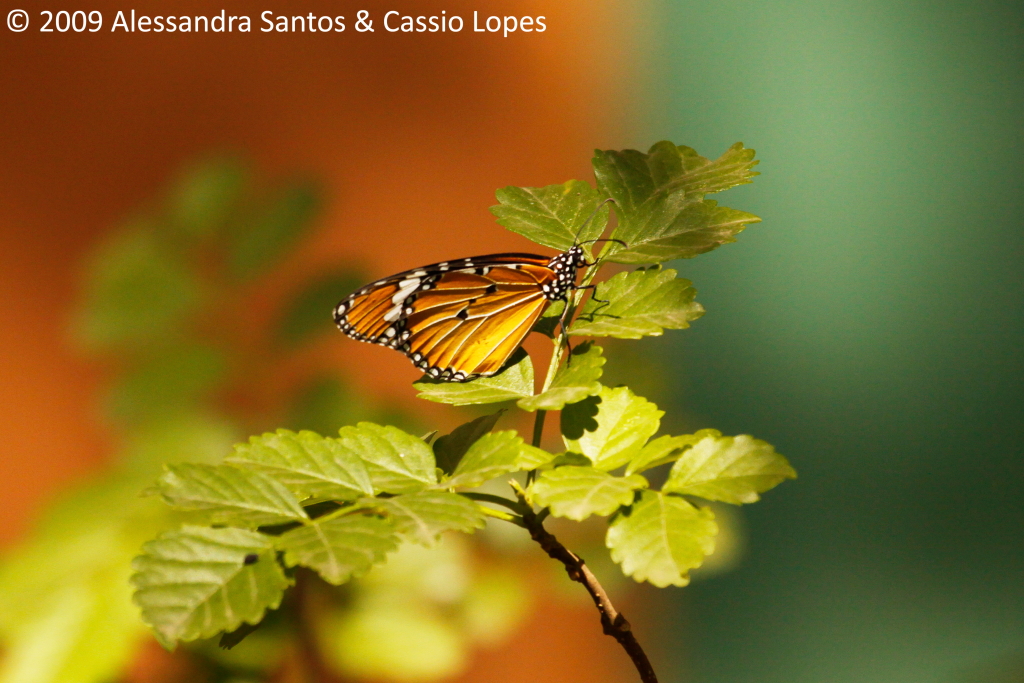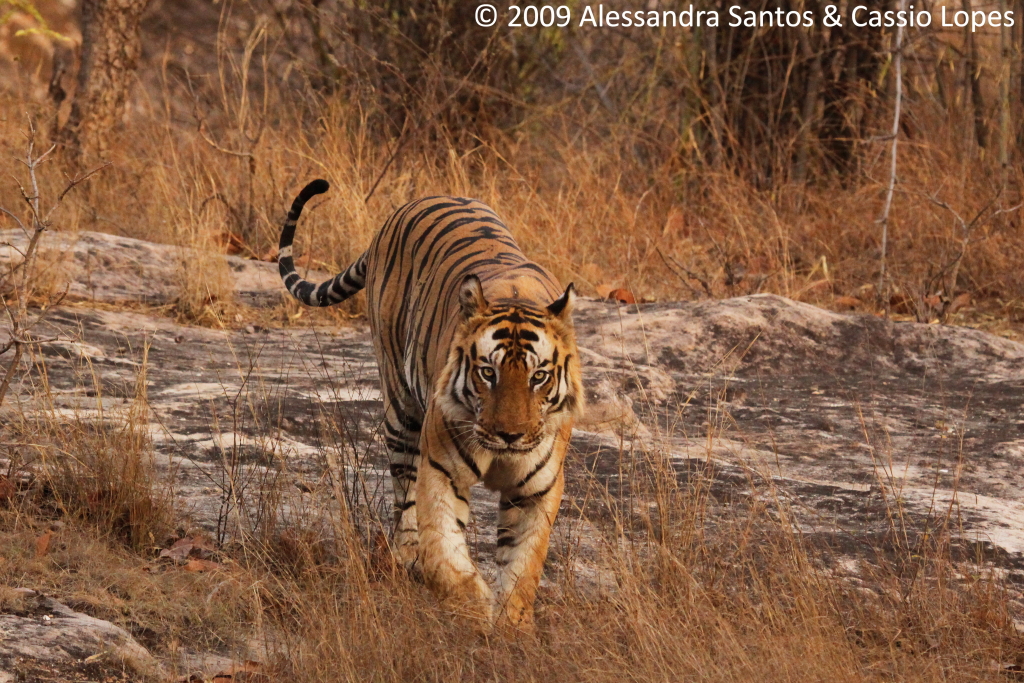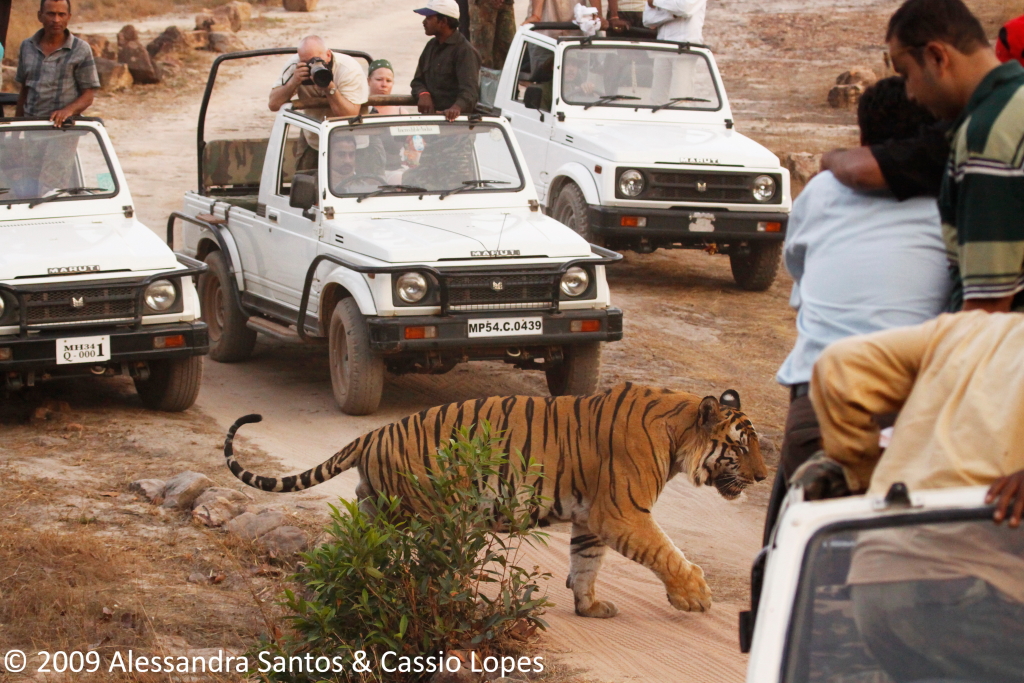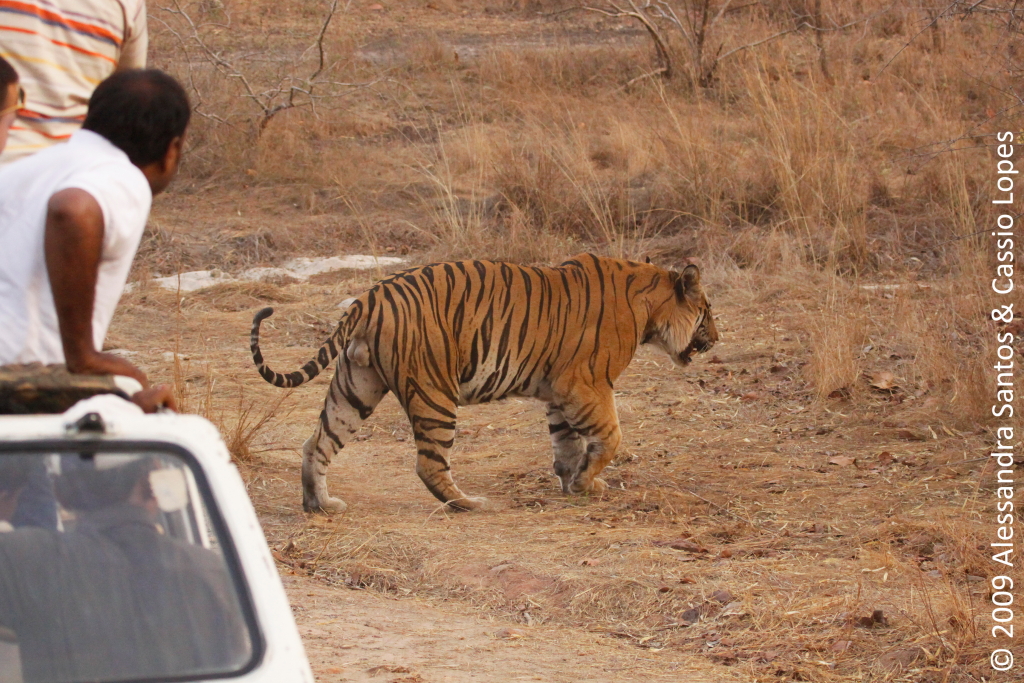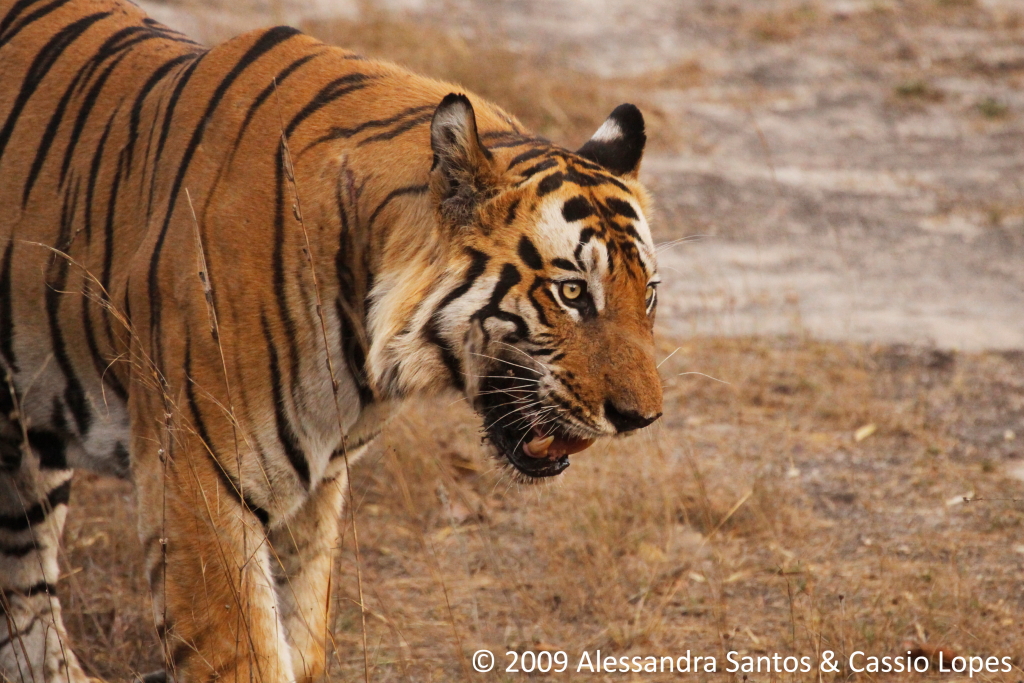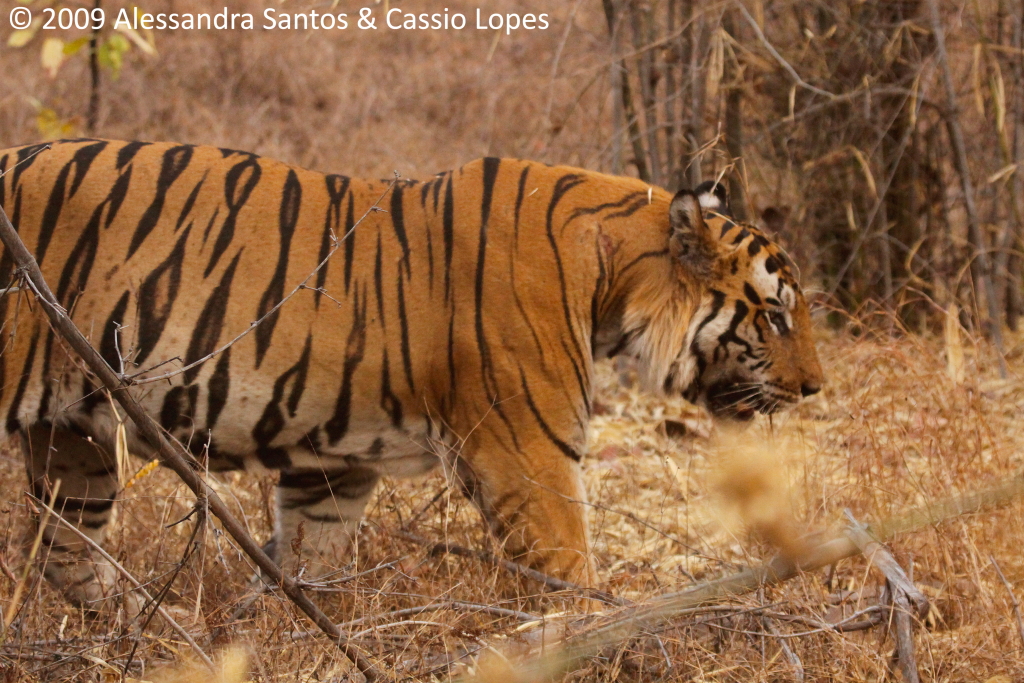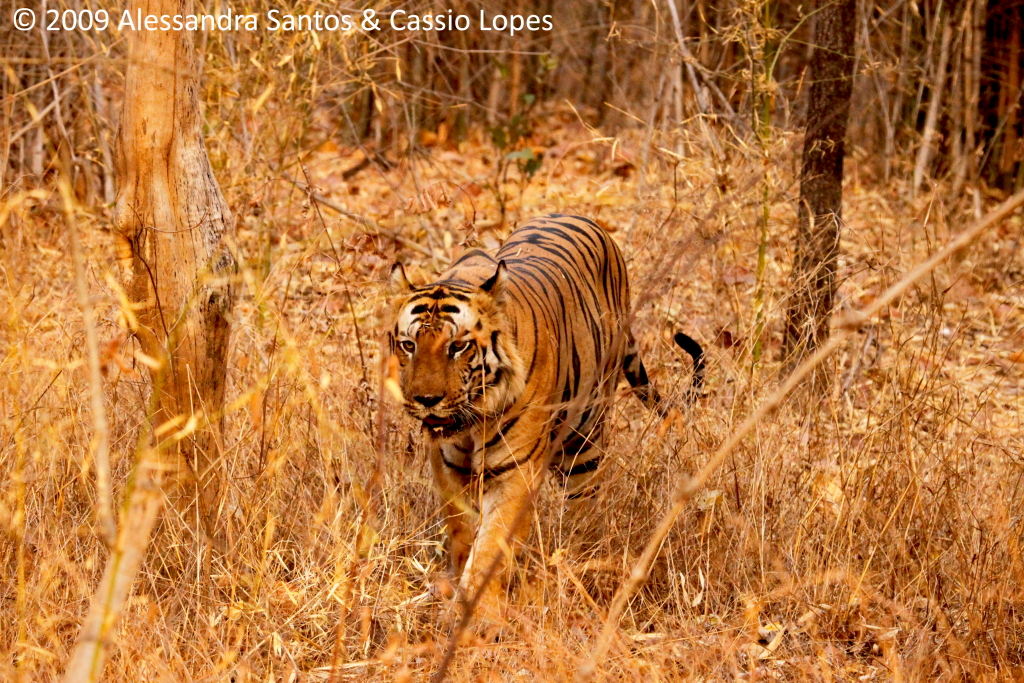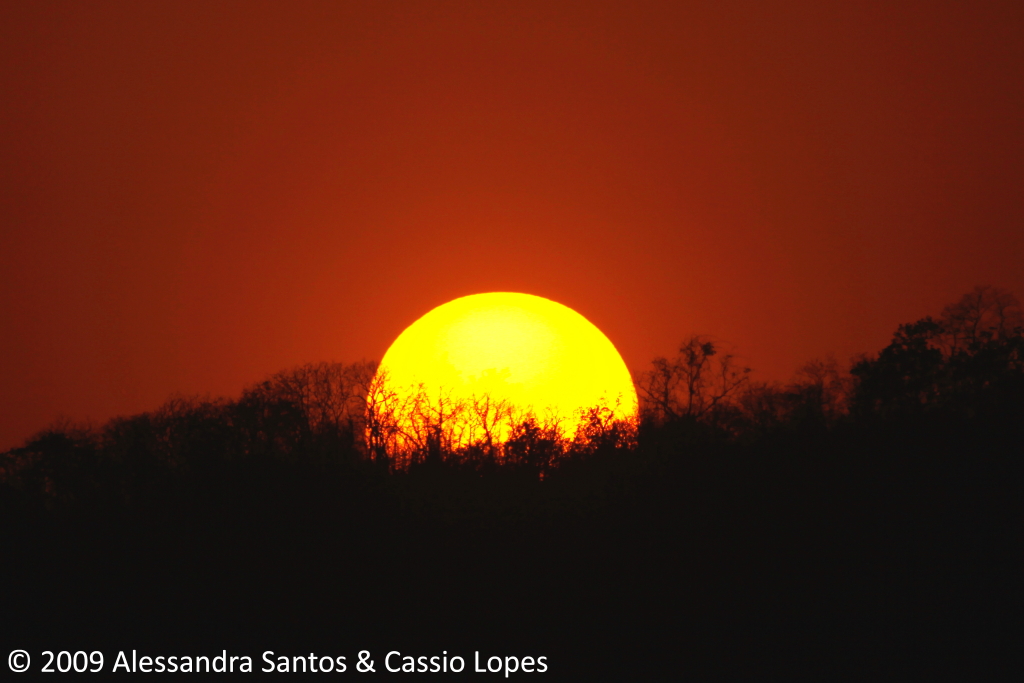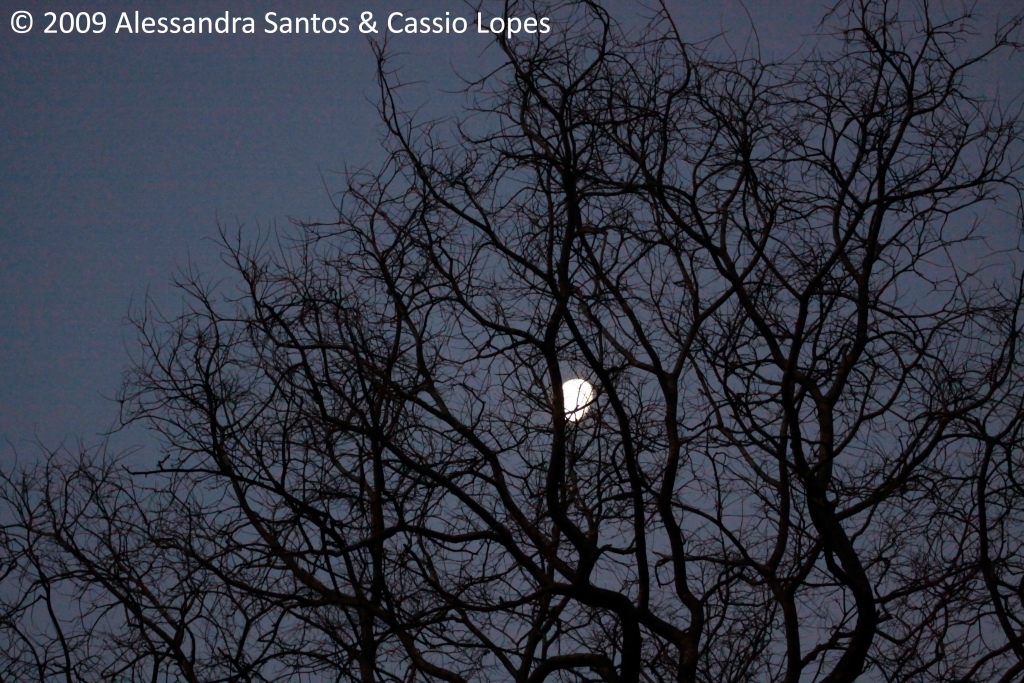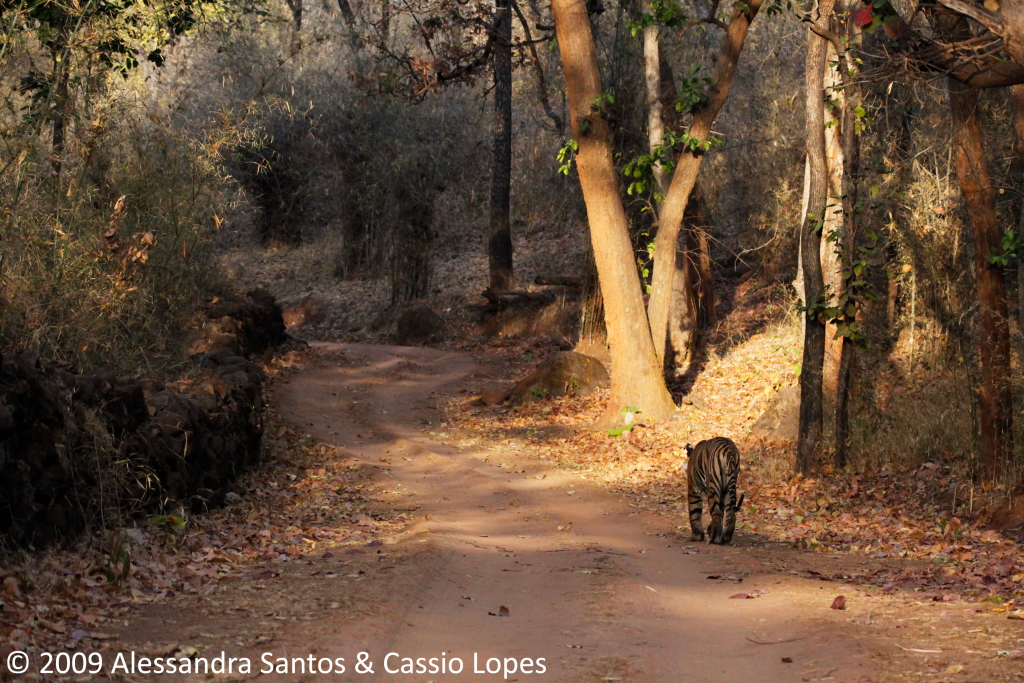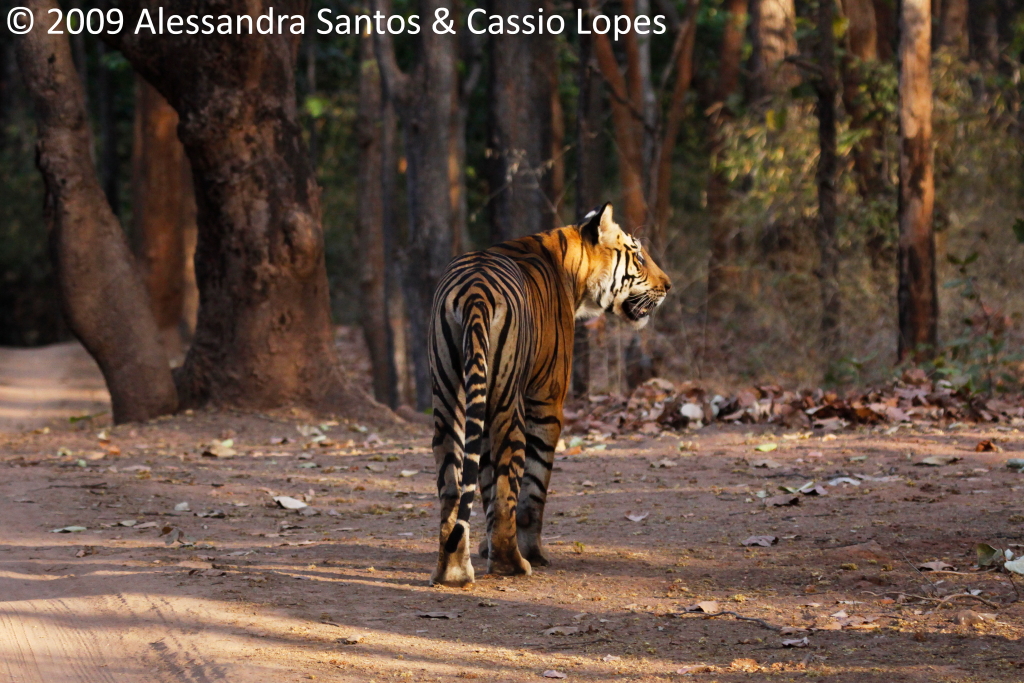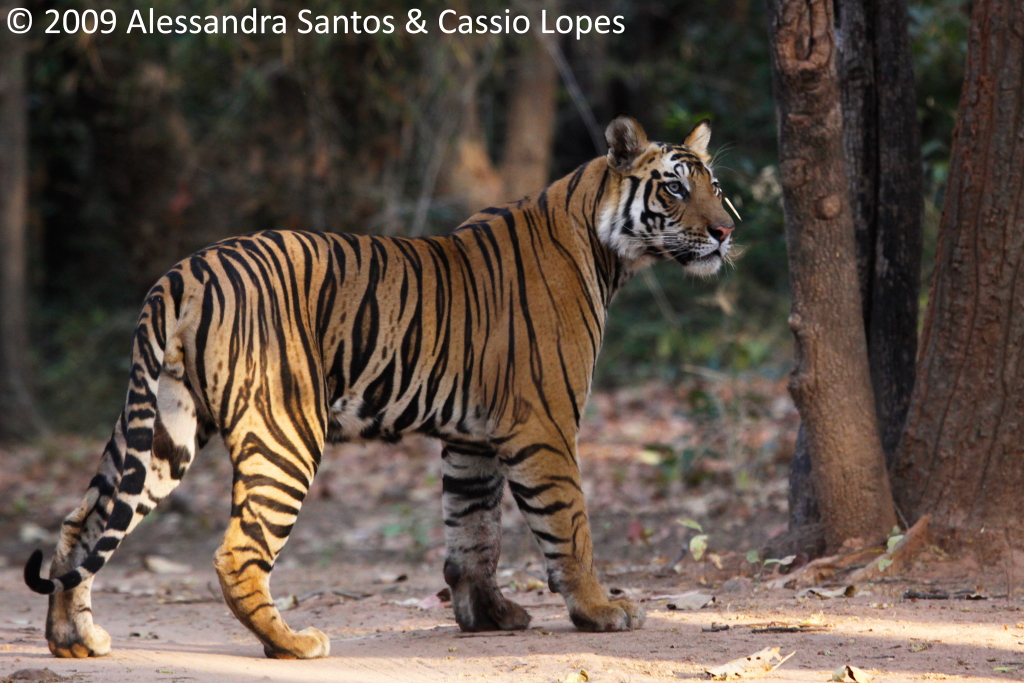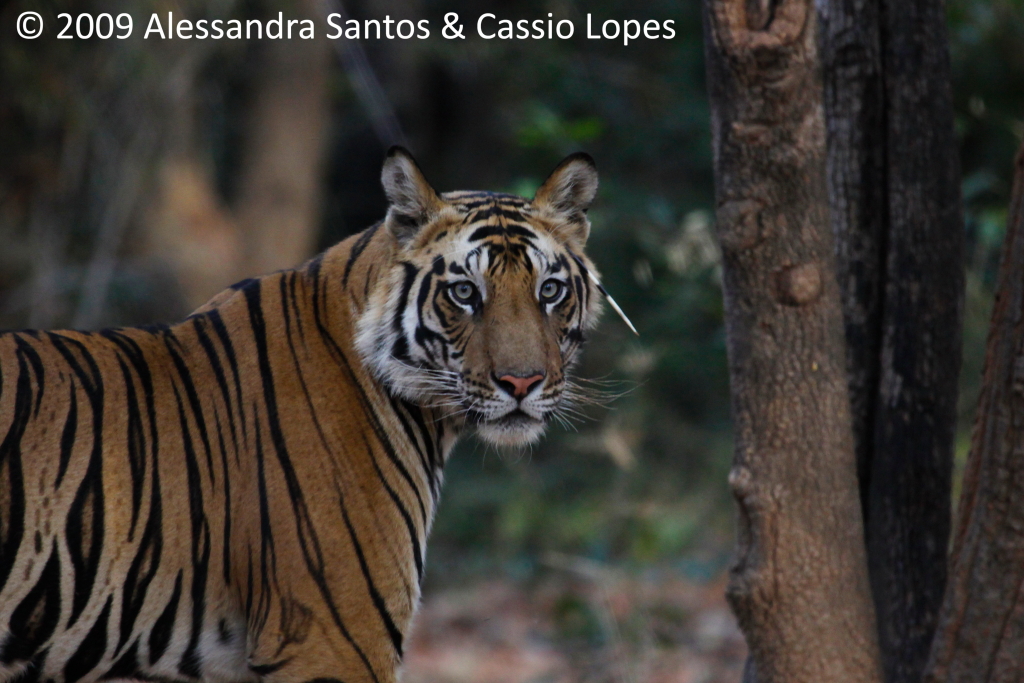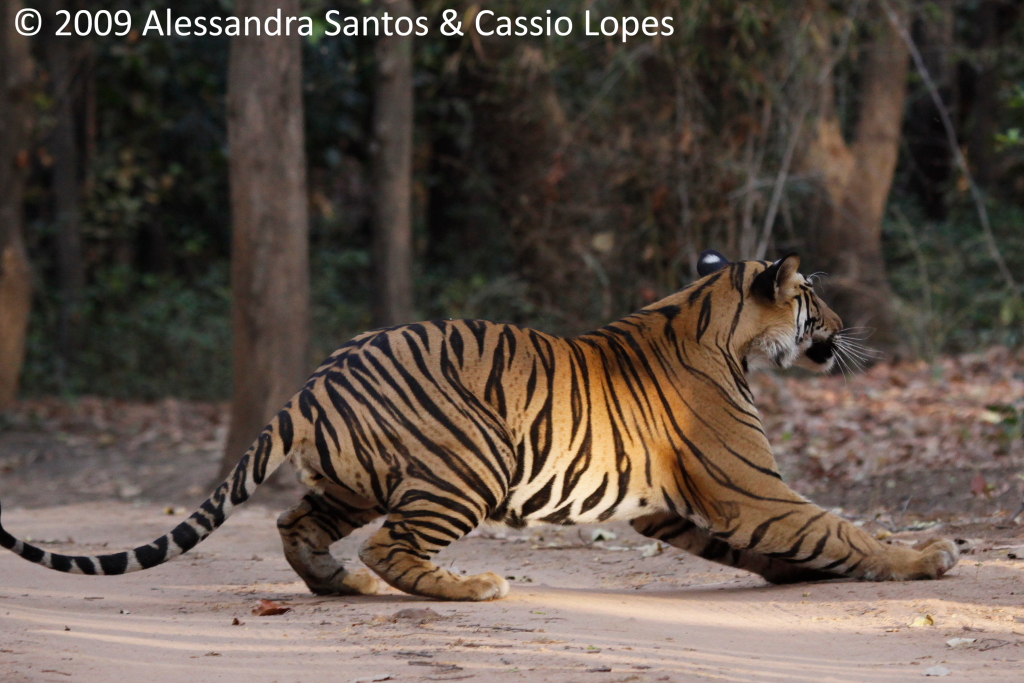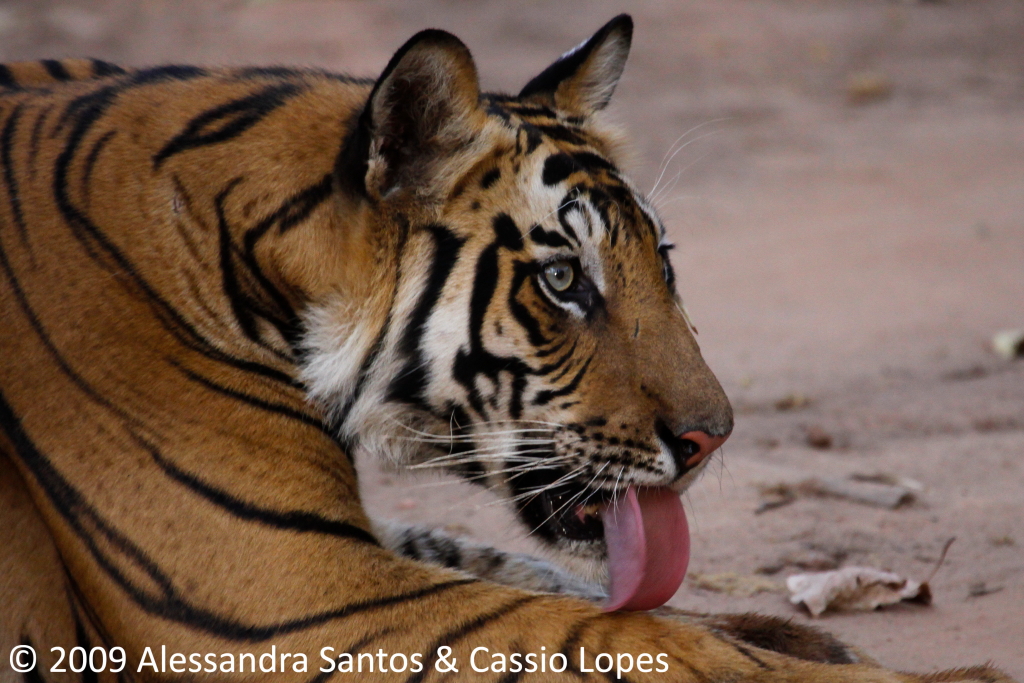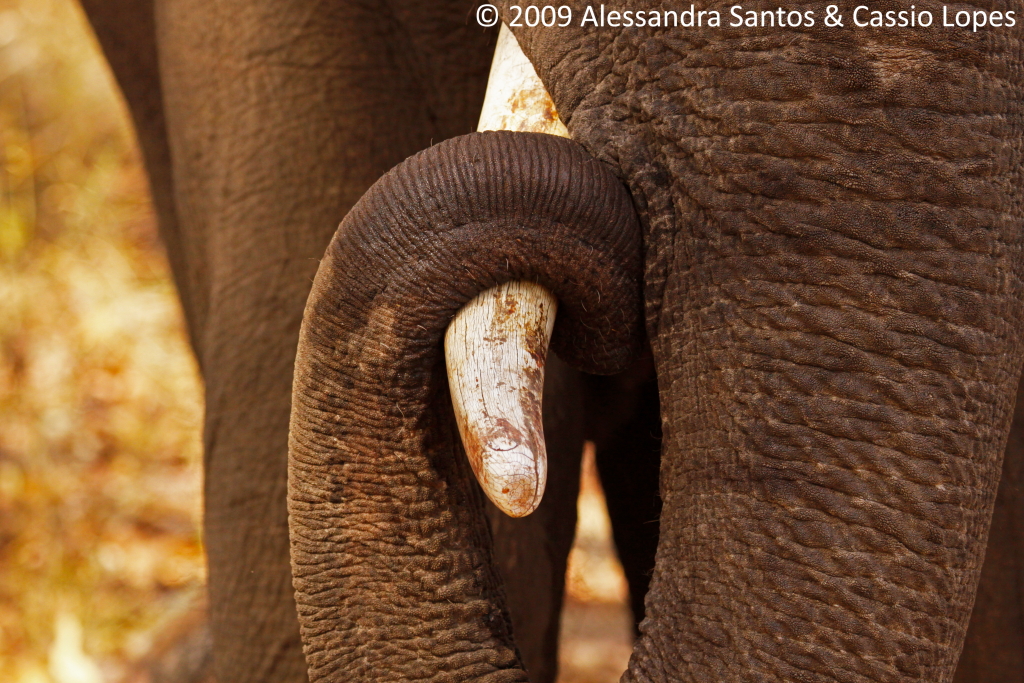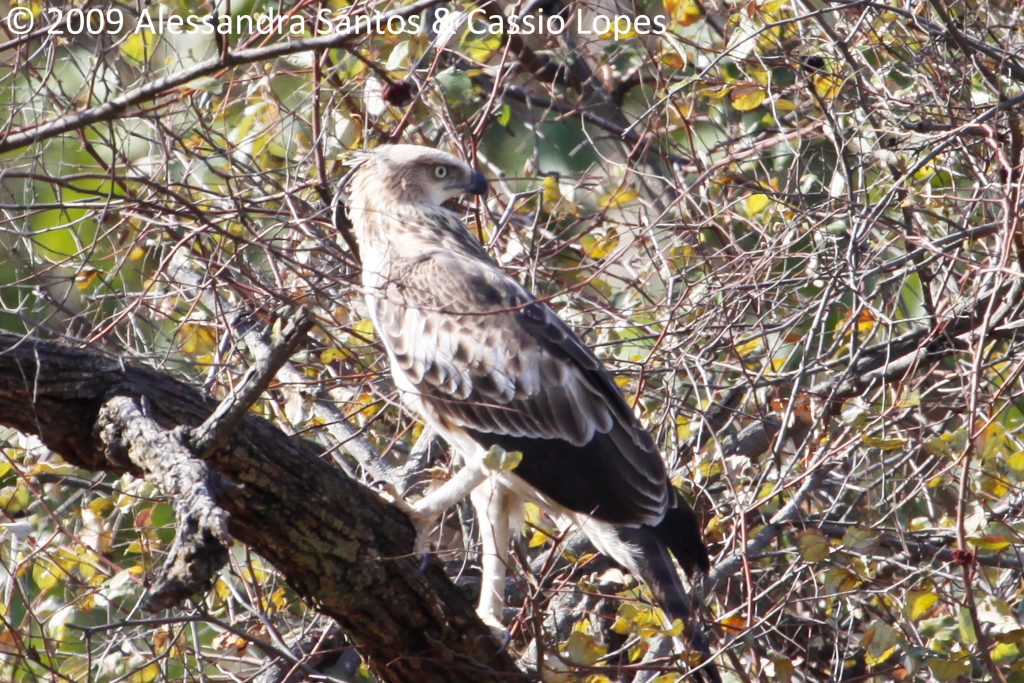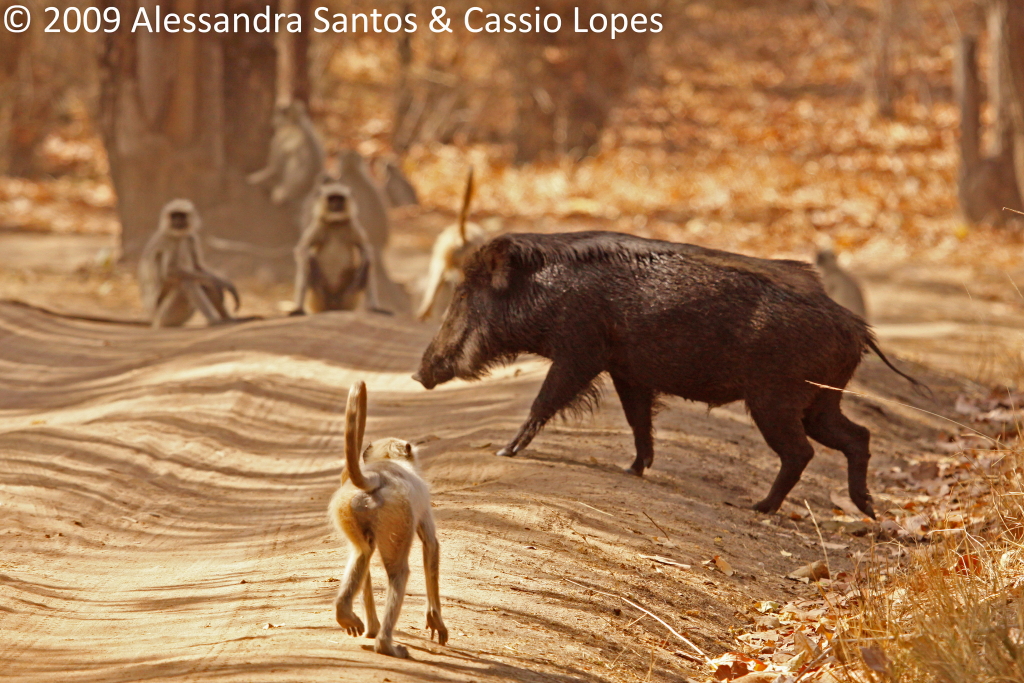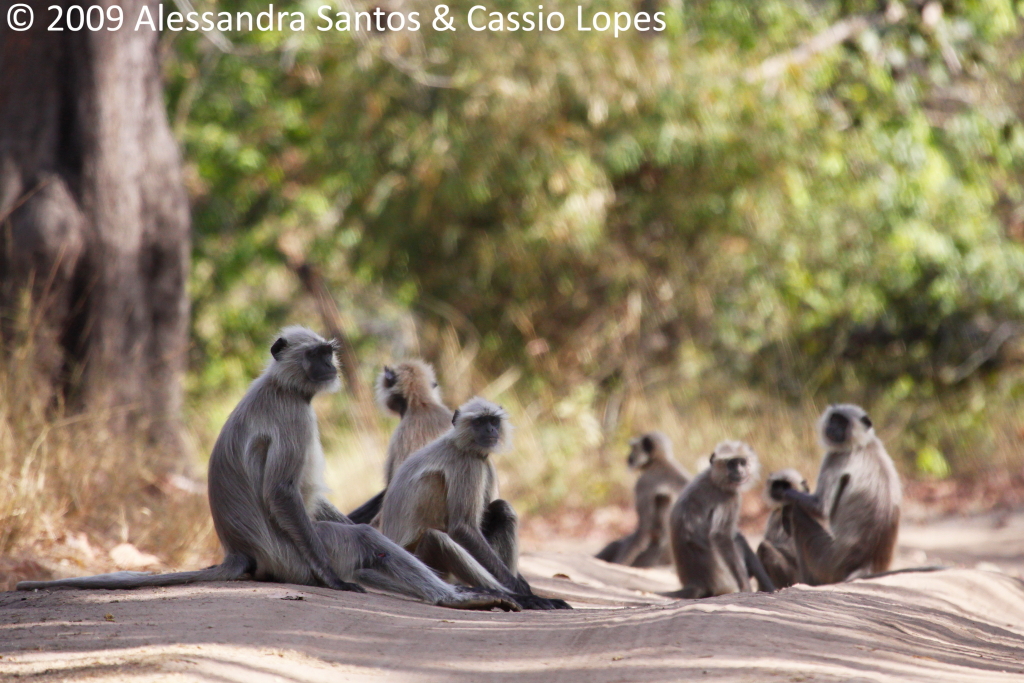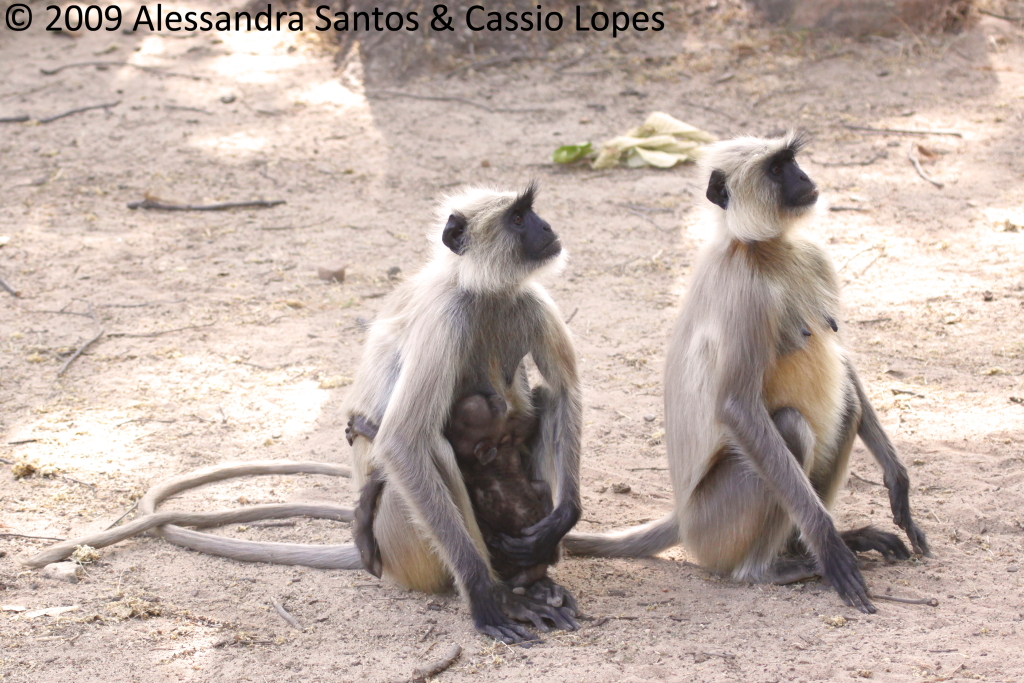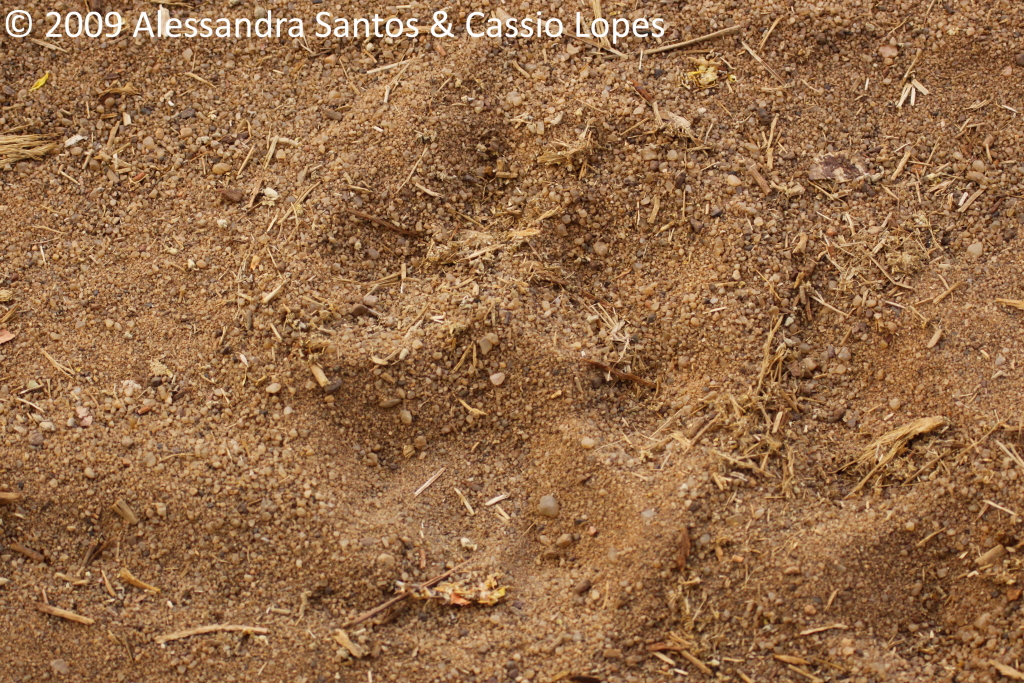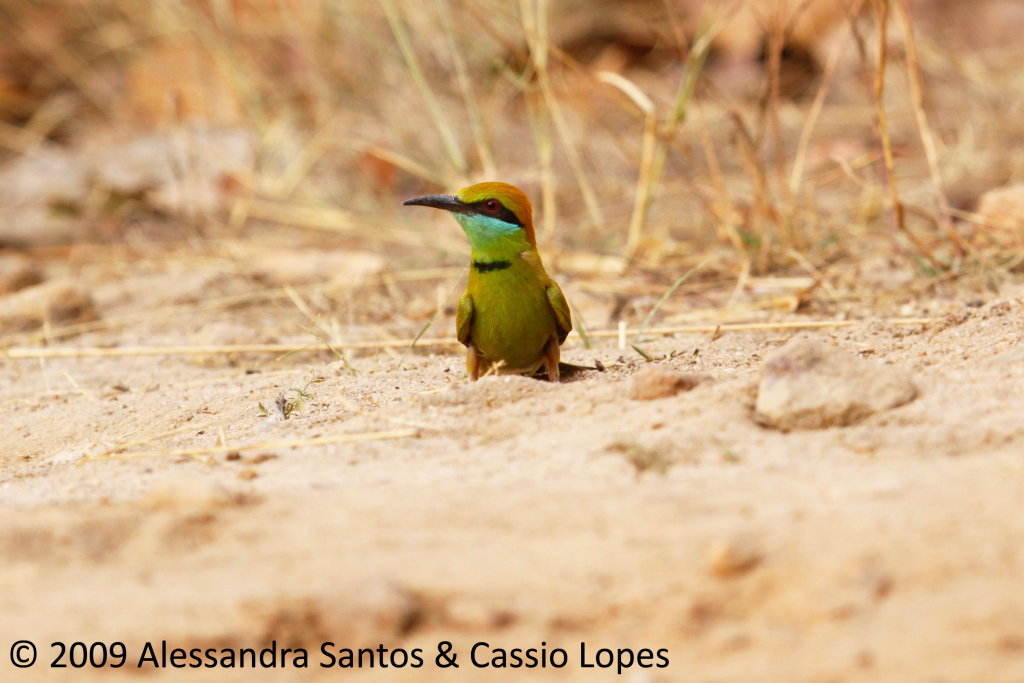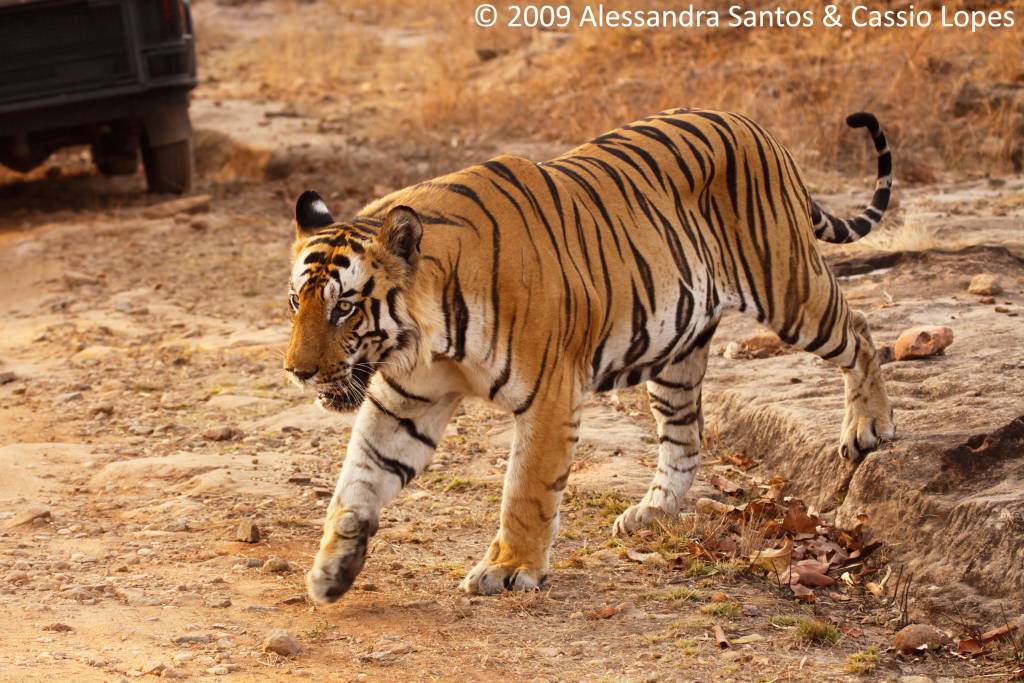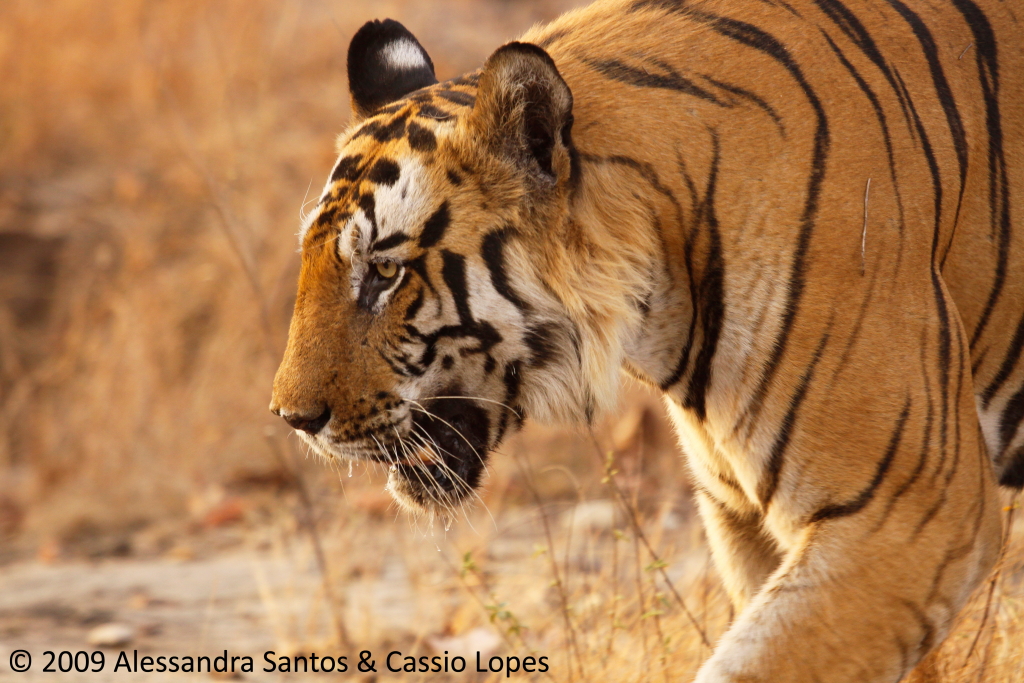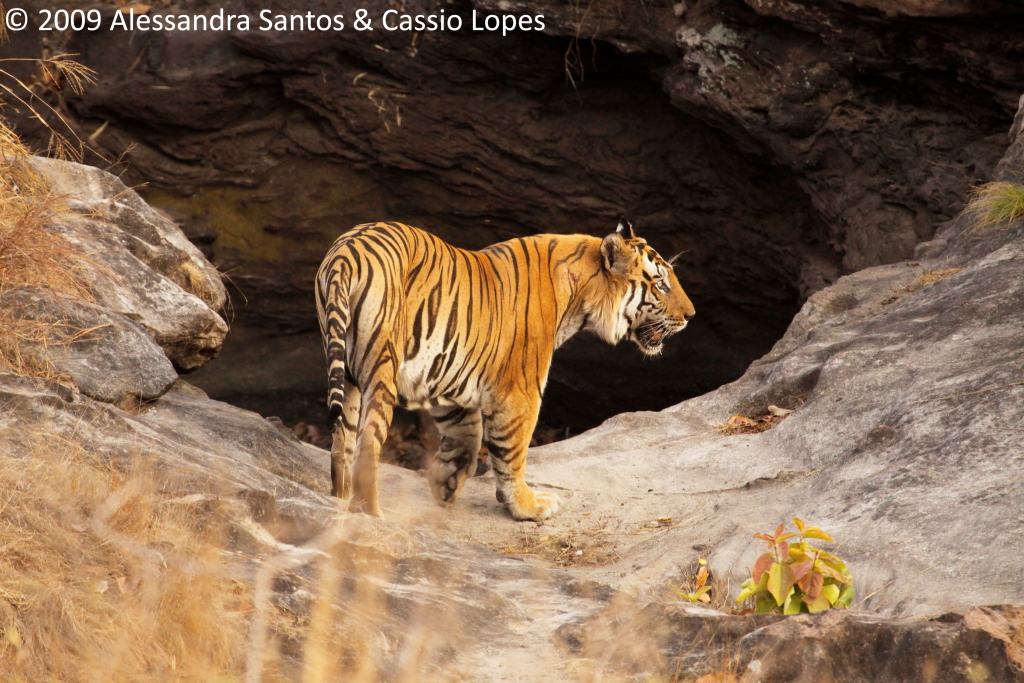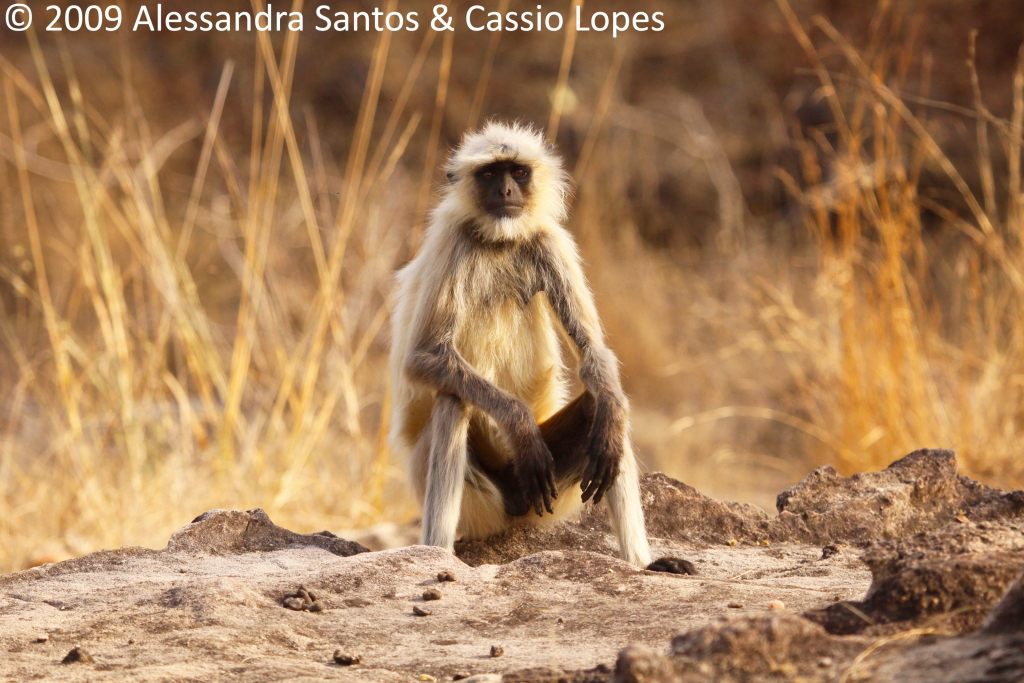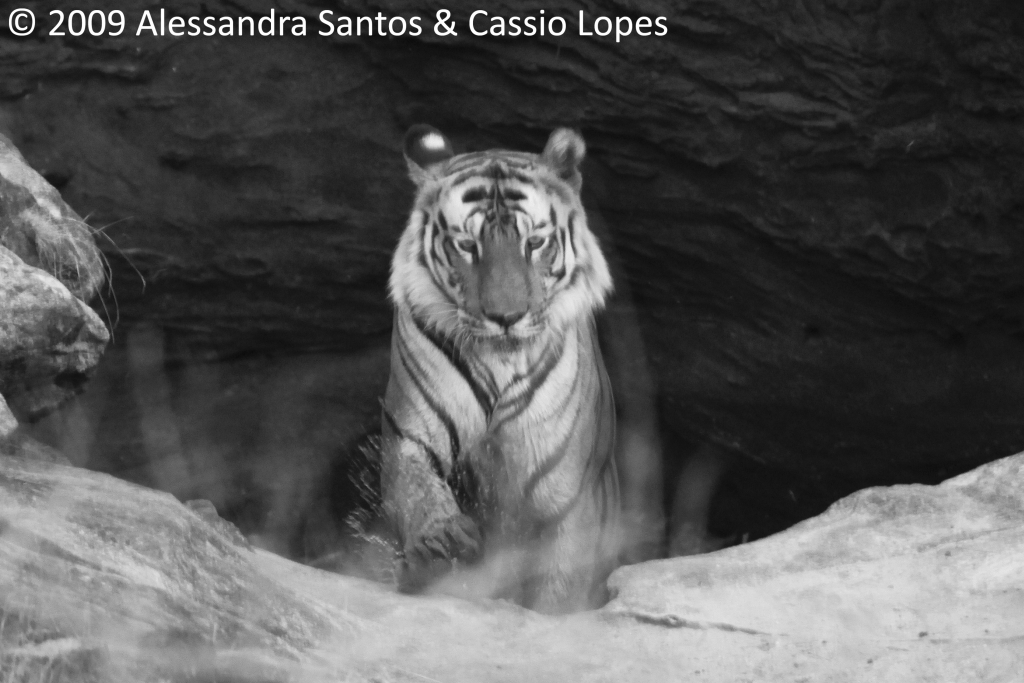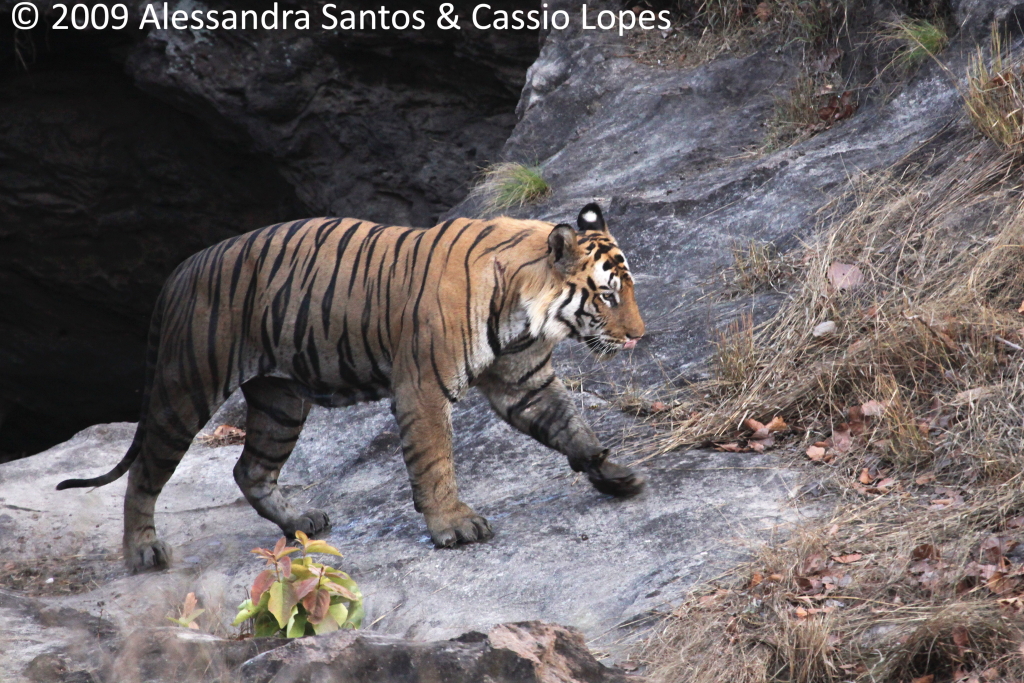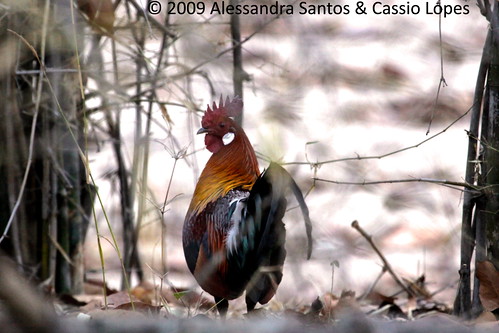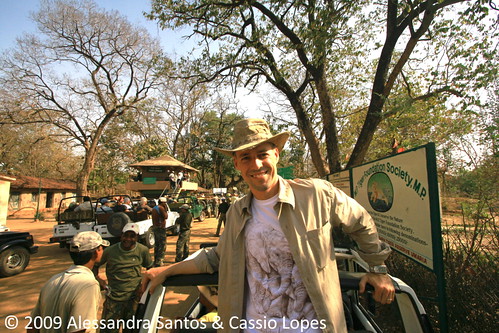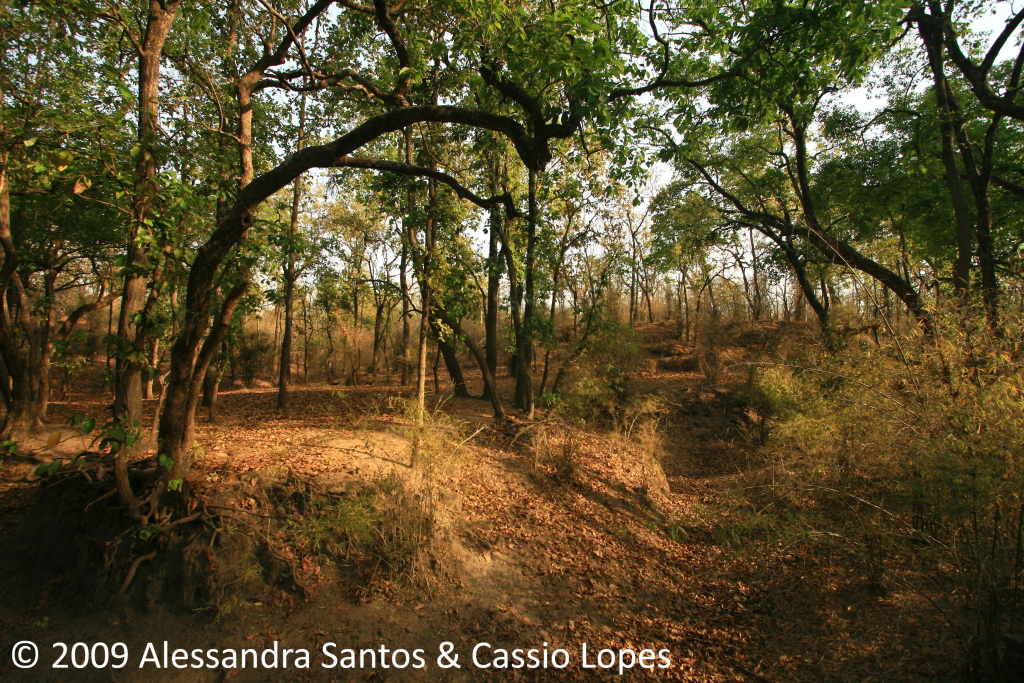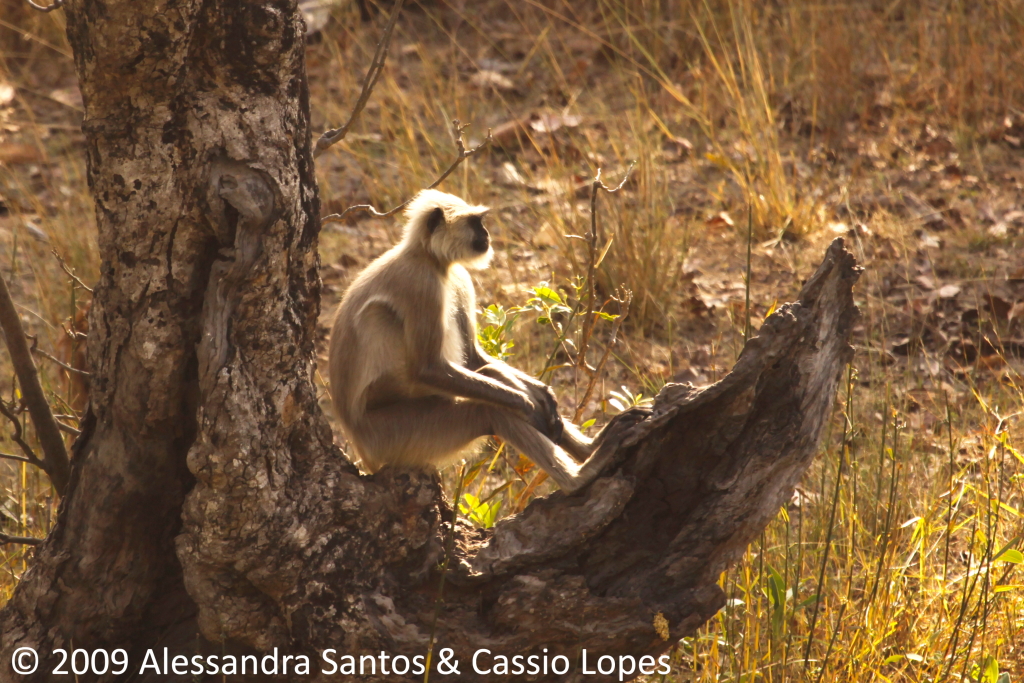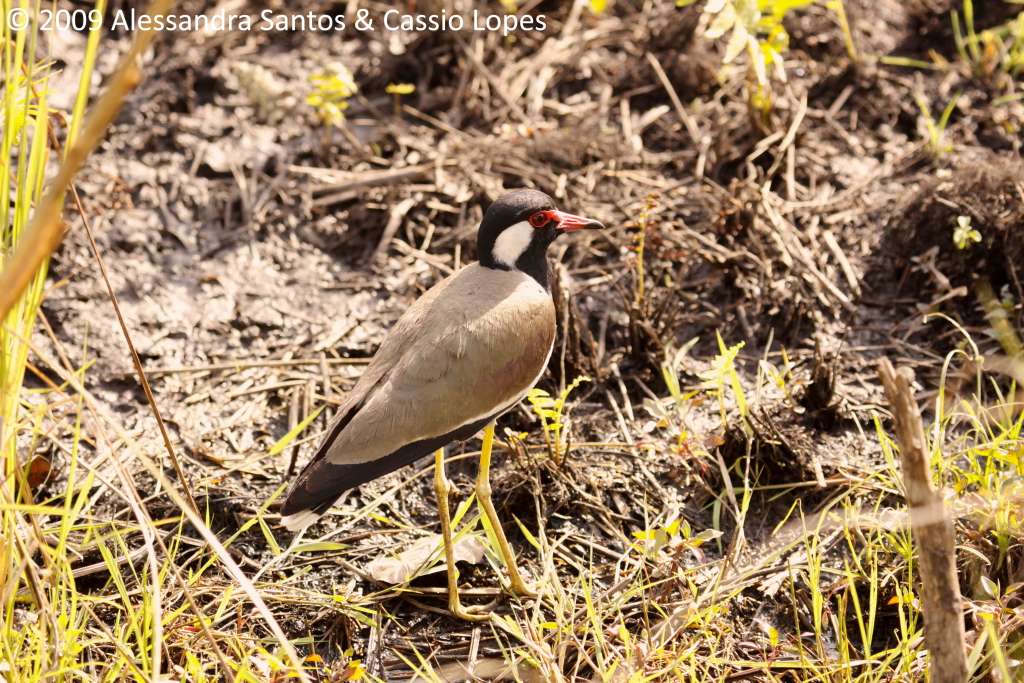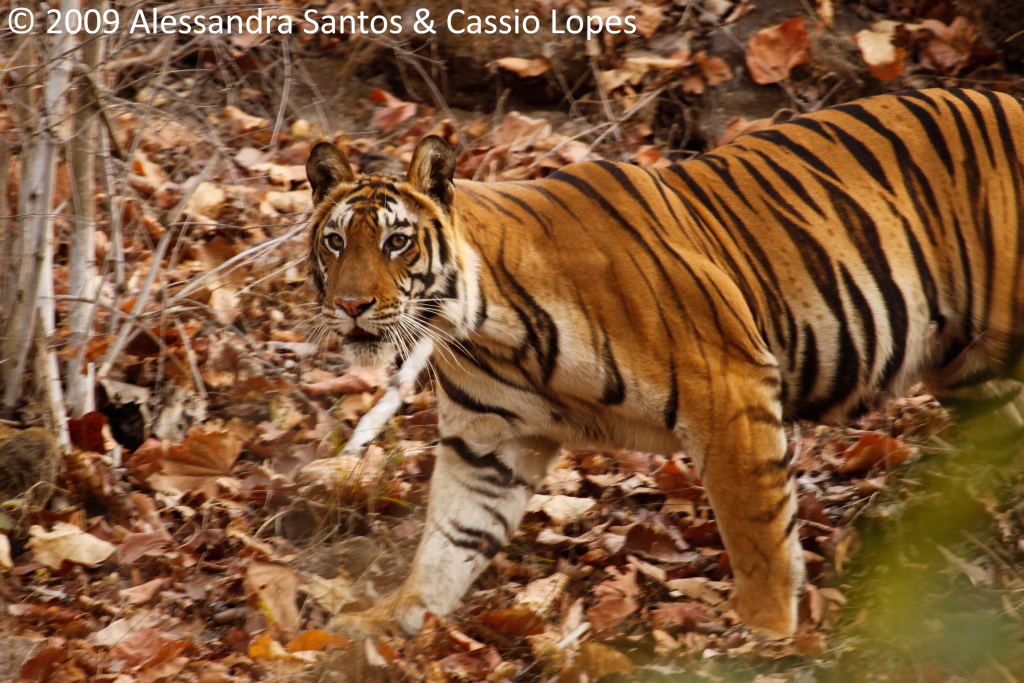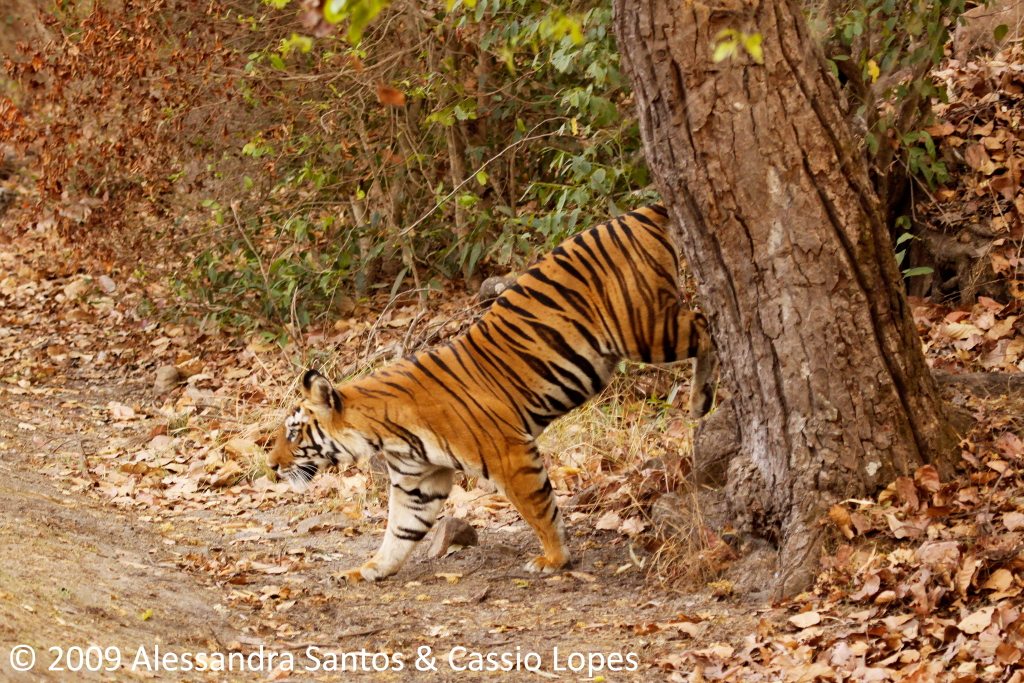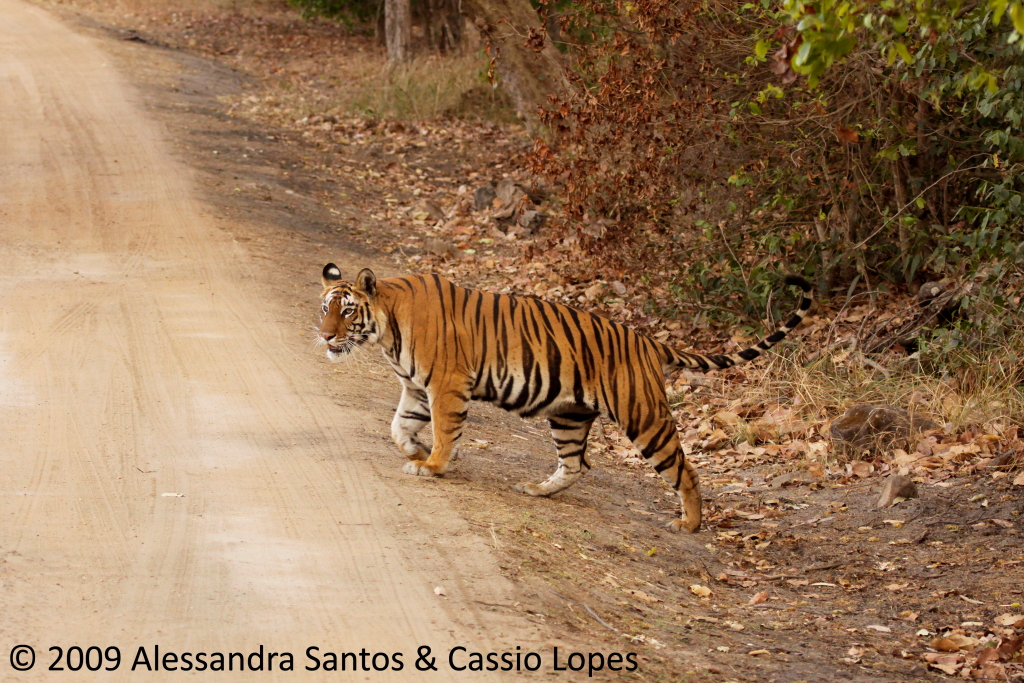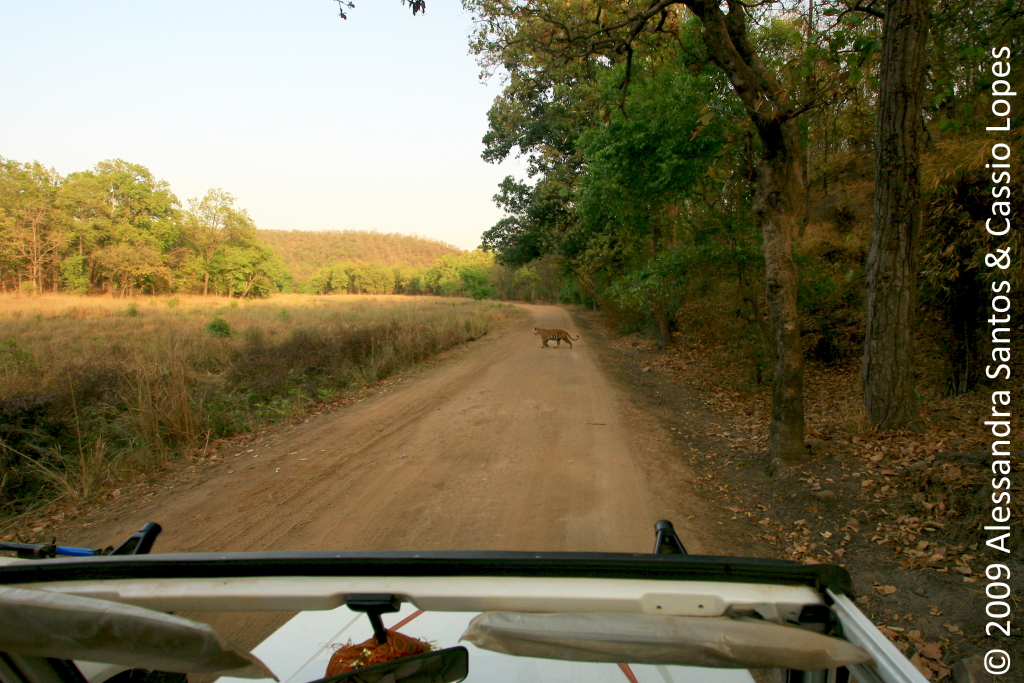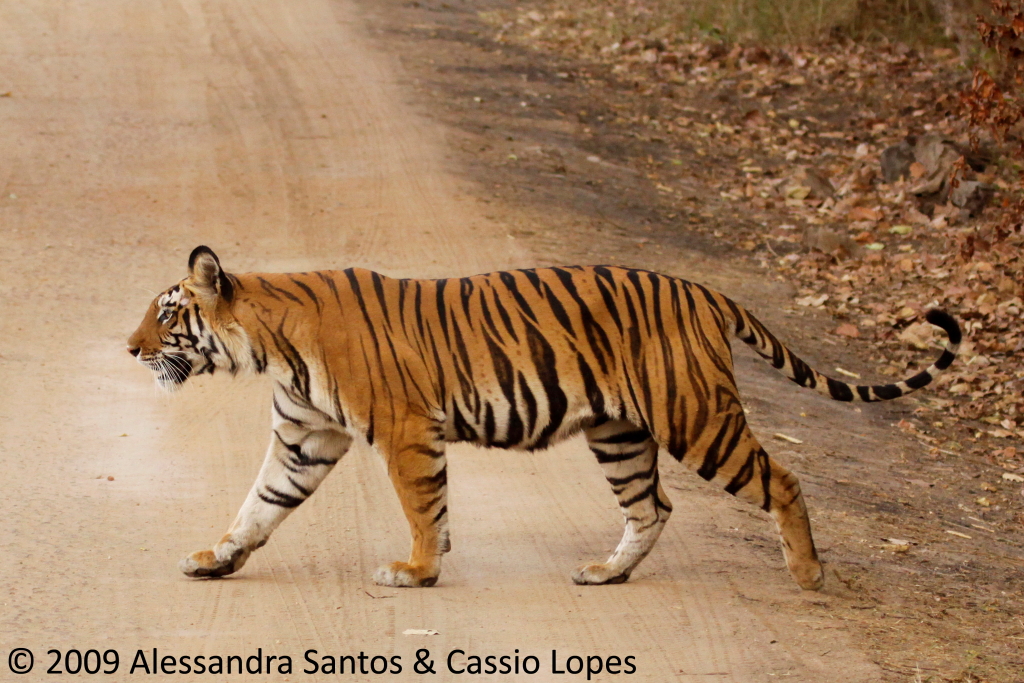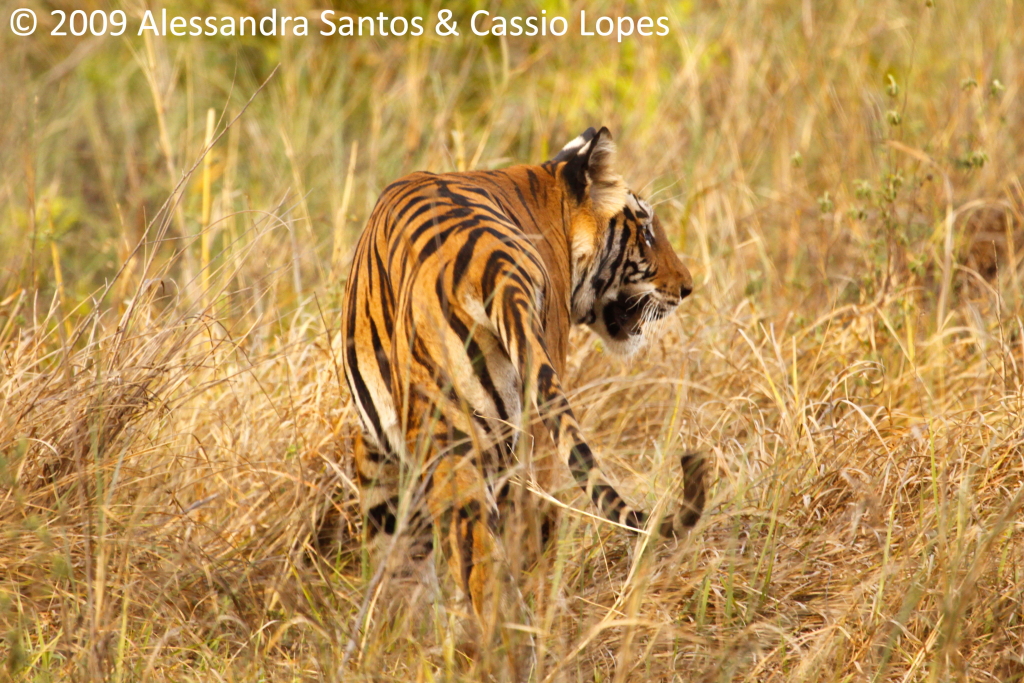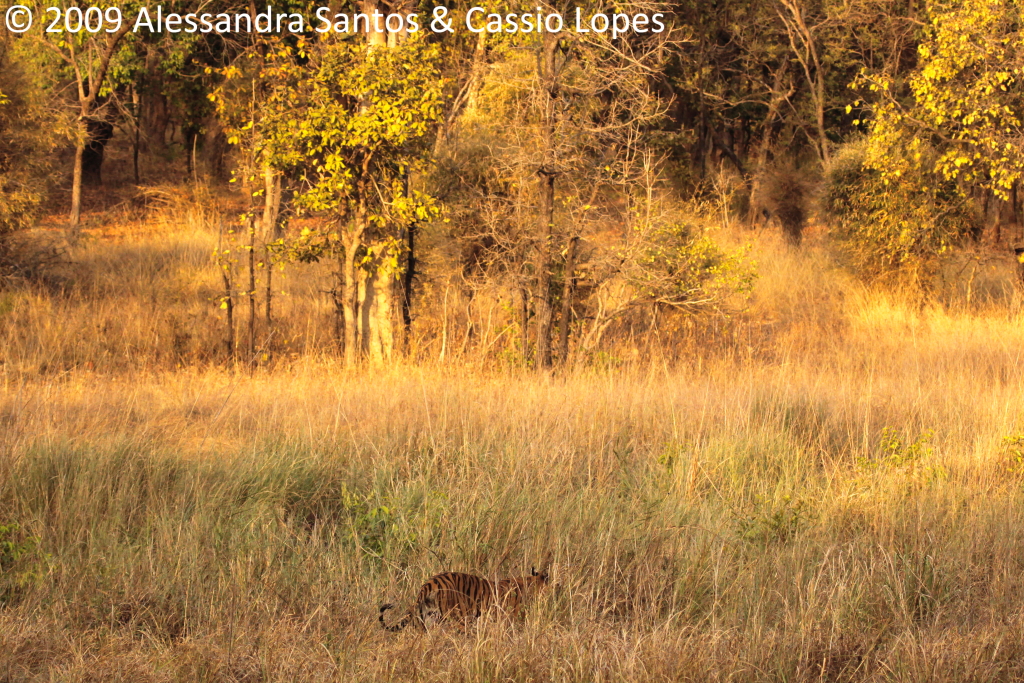I told before that the experience of sighting a tiger is a burst of senses. The dust in the air of the jungle smoothens the sunlight that tries to find its way through the leaves of the trees canopies and bamboos. There is not even a breeze and the air is hot. The scent of warm wood and dry leaves blends with an odd smell of the traces left by langurs. The atmosphere is set, you know that the tiger is approaching when you listen to the alarm calls from spotted deers, peacocks and sambhar deers - if you are lucky you may hear the roar of the tiger. You cannot notice the tiger until you see it clearly - the orange color of the his fur and the black stripes of his body moving through the bushes easily betrays your vision by desguised bythe shadows and yellow tones of the foliages - it is almost invisible. Then the tiger reaches a clear spot, the light reveals the big cat moving slowly, the massive paws touch the ground so heavily that you now can't loose his track anymore. There you go, camera on hands, can't stop clicking...
Play the sound file and listen to some of the most common alarm calls we hear in the forest. You will be able to notice the high pitch isolated screaming of the spotted deer (or Chital), like a small dog barking; and the loud alarm call of the peacock, which sounds more like a quick blow of a horn immediately followed by a series of usually 5 or 6 repeated strident callings.
It is a very low-quality recording, as it has been captured by the pocket-recorder we used for tagging the events along the game-drive. But we hope it can provide a slight idea of the environment where the pictures were taken.
Cheers.
The great wildebeest migration now enters Masai Mara
6 months ago

